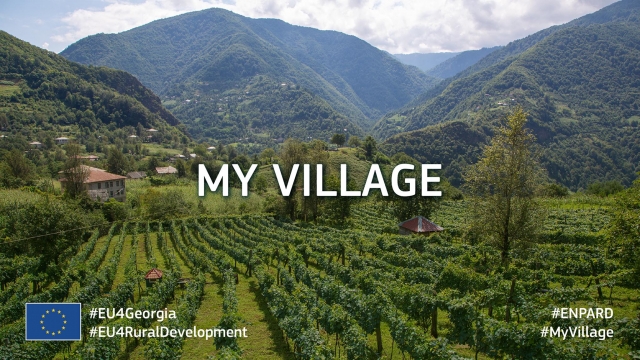EU Supported Local Action Groups in Georgia Mobilizing Communities
1000 jobs in rural areas and almost 10,000 improved lives – that is the impact so far of community-based rural development in Georgia, through EU supported local action groups (LAGs). Follow the EU’s information campaign “My Village” and find out more from stories about how LAGs work and the impressive initiatives they are supporting in the regions!
The EU-supported Local Action Groups (LAGs) in Georgia follow democratic principles of governance and development and envisage active public involvement and participation in decision-making. LAGs bring together private, public, and civil society sectors at the local level. They identify rural development priorities and draft local development strategies based on the municipality's needs and capabilities analysis and then provide EU-funded grants to support local development initiatives. The LAG's effective work depends on its members: on the mobilization of the local private, public, and civil sectors to identify and respond to problems in the region. Based on the analysis of the municipality's needs and capabilities, the LAG identifies development priorities and drafts a local development strategy.
In this article, you will read the success stories of some of the Georgian LAGs.
Tetritskaro LAG
The Tetritskaro LAG has been functioning for three years and over time, despite the inhabitants' initial skepticism, the LAG has completely changed the municipality's life: locals have realized they could make their wishes or dreams a reality in their neighborhood.
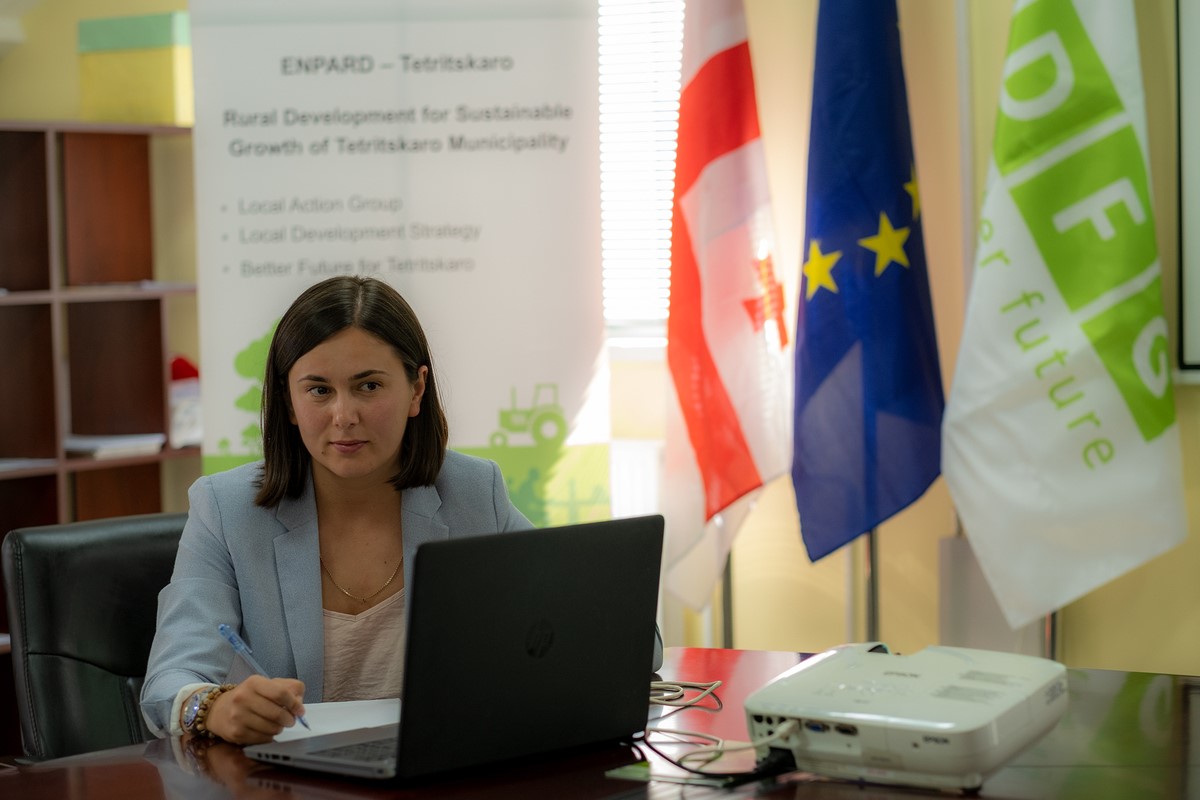
In its activities, the Tetritskaro LAG follows a consistent pattern: initiatives start with identifying a problem that is then addressed by engaging all the three sectors. According to Nino Tikishvili, Chair of the Tetritskaro LAG, “local communities know their needs better, so they identify the existing problems and decide on the ways to address them. It should be emphasized that the LAG is a multi-sectoral platform bringing together representatives of the civil, public, and private sectors. This way it’s more effective as they all share their experiences and opinions with the team for reaching a common goal.” Before the project, there were no tourist attractions, and farmers could not afford to buy necessary agricultural equipment. However, the LAG, with the support of the EU ENPARD program, created new opportunities in Tetritskaro, involving the population in problem-solving, and just last year, more than 500 hectares of land were cultivated in the municipality, and family hotels/guesthouses were invested in, constructing the new and improving the old ones. Also, the Tetritskaro LAG was actively involved at the national or international level, which helped to raise awareness locally.

The Tetritskaro LAG has already funded more than 80 local development initiatives, among them updating and promoting kindergartens, reshaping the region’s economic and social environment.
Keda LAG
Keda is rich in natural and human resources that were not used properly. Before the LAG project was implemented, businesses were mainly limited to agriculture and tourism, the service sector was substandard; awareness was quite low, primarily because of the lack of community organizations and inter-agency cooperation in the region.

Now that the LAG has applied the LEADER approach to project funding, mobilized local communities to participate in the municipality's development new opportunities were opened in the region. The Keda LAG has funded more than 90 local initiatives that have contributed to the development of various sectors. According to Giorgi Abuladze, Chair of the Keda LAG, one of the key projects includes the production of concrete poles and arrangement of vineyards, initiated by Avtandil Tsintsadze.

Vineyards are cultivated on 180 hectares in the Keda municipality. The demand for wines from Upper Adjara is increasing on the market. Farmers cultivating vineyards use a lot of wood for arranging vineyard poles. Avtandil Tsintsadze replaced the practice of using wood poles with concrete ones that are more durable and reduce the need for tree-cutting. The project helped start production of both vineyard and fence poles and offer vineyard cultivation/renovation services.
Representatives from all the three sectors in the Keda LAG continue to identify local needs and to address them, believing that municipality development is based on eager and active local communities.
Khulo LAG
Khulo LAG has significantly changed the situation in the municipality. There were no active civil society organizations. Now the LAG is planning activities for the overall development of the municipality.
According to Aslan Tunadze, “Mobilization campaigns have become much easier now - we have representatives from almost every community, which facilitates information-sharing.”
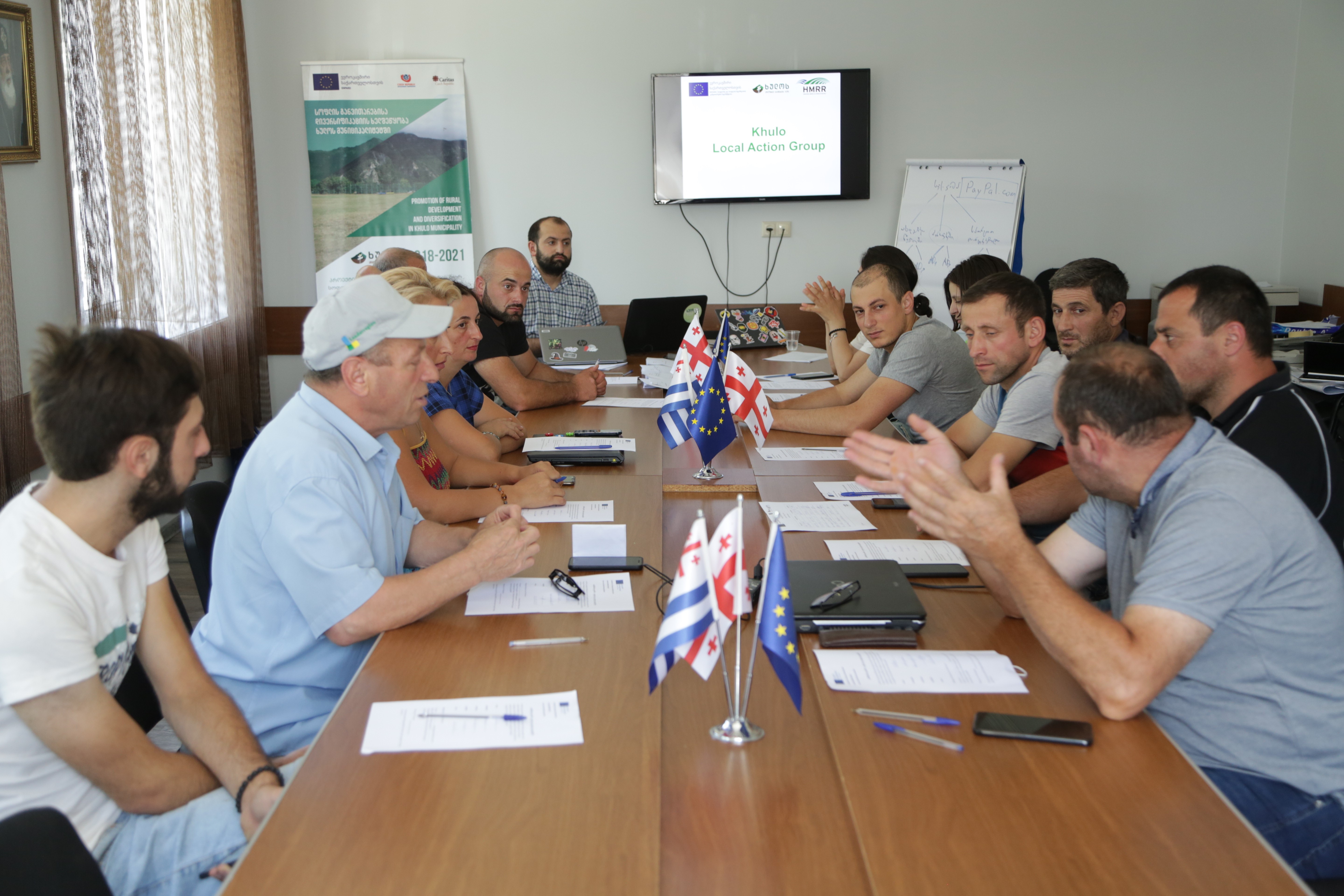
Small groups of stakeholders have been set up within the Khulo LAG, for example, a network of family hotel owners who work together and share experiences. A youth team is currently being set up at the LAG, which would implement various activities.
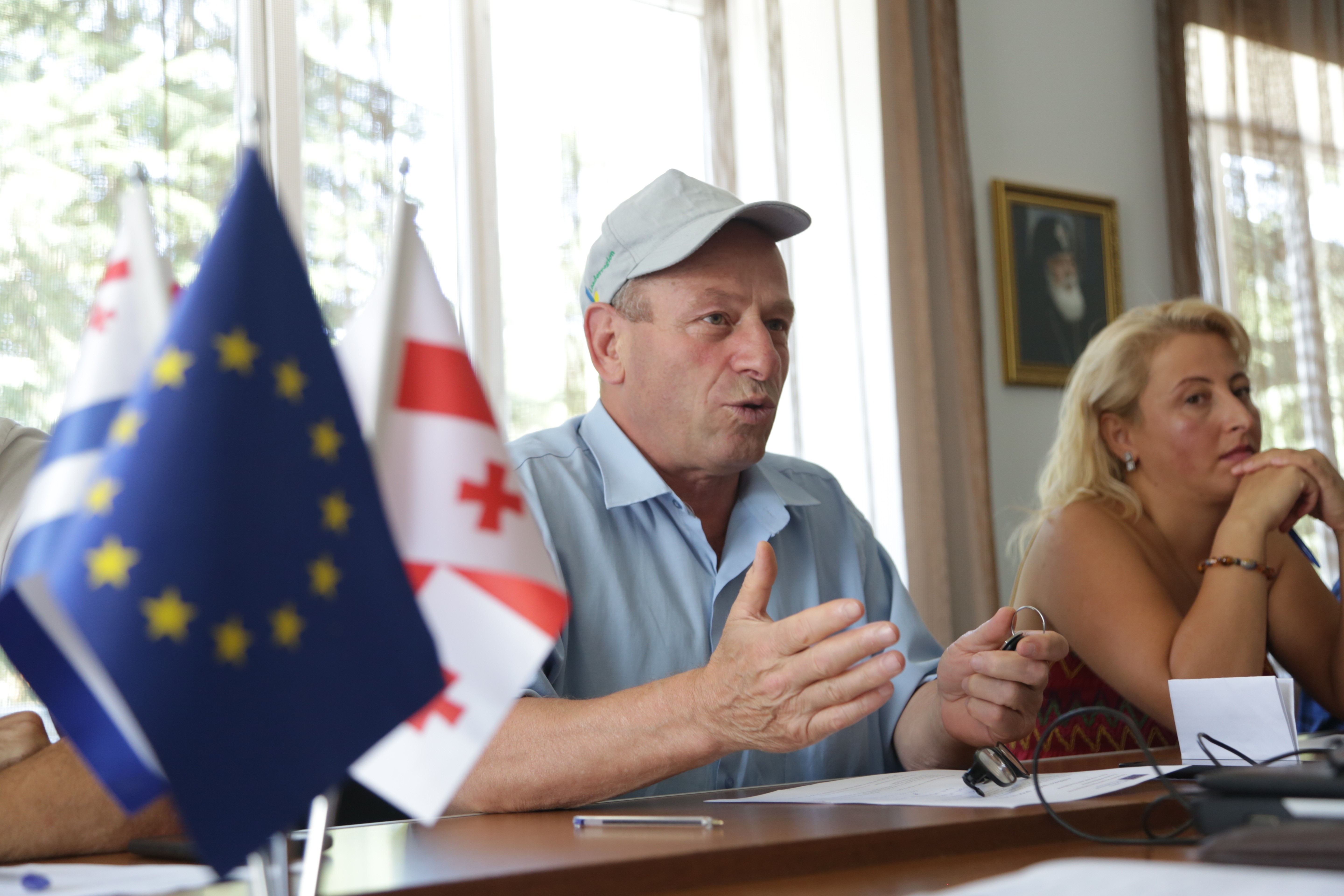
The LAG has encouraged greater community involvement in the municipality. LAG activities involve more than 30 active citizens from the Khulo Municipality, both civil and private, as well as the public sector. According to Rodam Shavadze, Chair of the Khulo LAG, involving people with different backgrounds in civic activities “would let us be more objective and attract more people. The involvement of young people is especially important because our future depends on them, so what empowers youth is well-spent.”
The Khulo LAG has funded 73 local development initiatives, including two sewing shop projects in the communities of Khulo and Borjomi. Both sewing shops employ up to 15 women, never employed before, and now as happy as can be working there.
The LAG also funded Besik Dekanadze's project to fully equip a dental workshop, reducing the service costs for the population.
Dedoplistskaro LAG
In the three years of its functioning, the Dedoplistskaro LAG has funded 111 initiatives and created hundreds of jobs. The implemented projects offer jobs to local construction companies, suppliers, and drivers, and up to 500 applicants have been trained in project-writing and business plan-drafting.
According to Dedoplistskaro LAG Chair Ana Benashvili, members of the LAG Board have also gained a lot of experience during this period: “We have received serious and diverse training, and visited our partners in Romania and Spain to get acquainted with the work of European LAGs.”
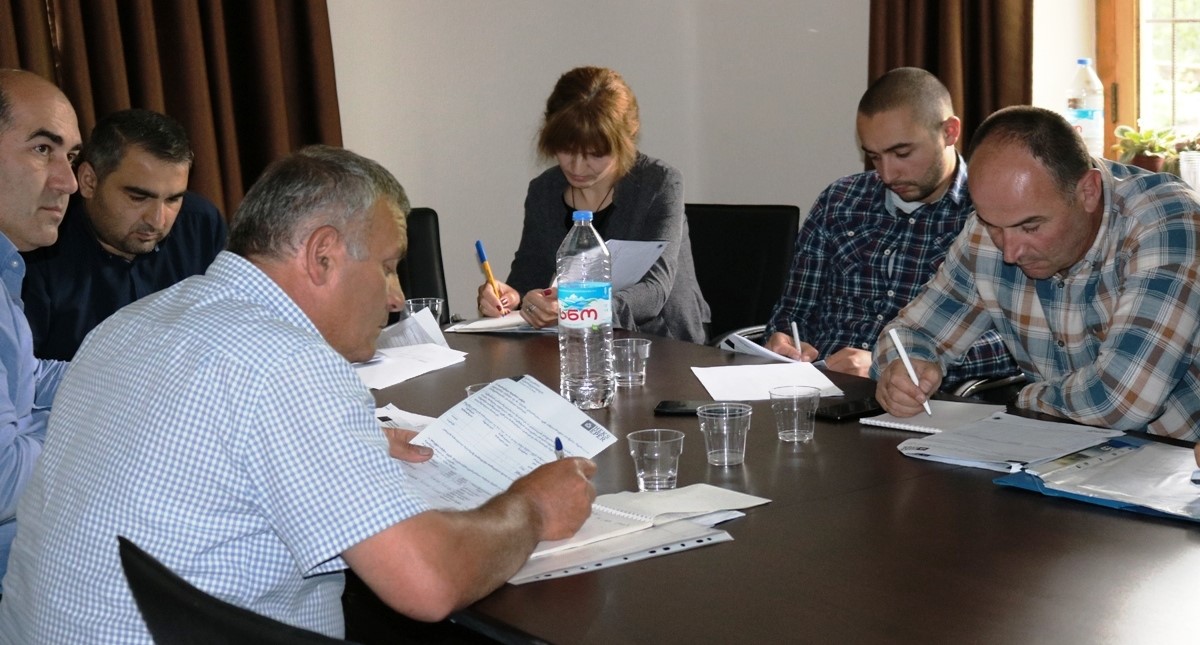
The Dedoplistskaro LAG has representatives from almost all villages, and the three-year activities have revived the villagers who developed the ambition to write projects, get repeated funding, and enhance or start up a business: “LAG's Board Members consult potential applicants and help them write projects. We also collaborate with other LAGs, make study visits to each other, share experiences and success stories, and plan for future collaboration,” says Anna.
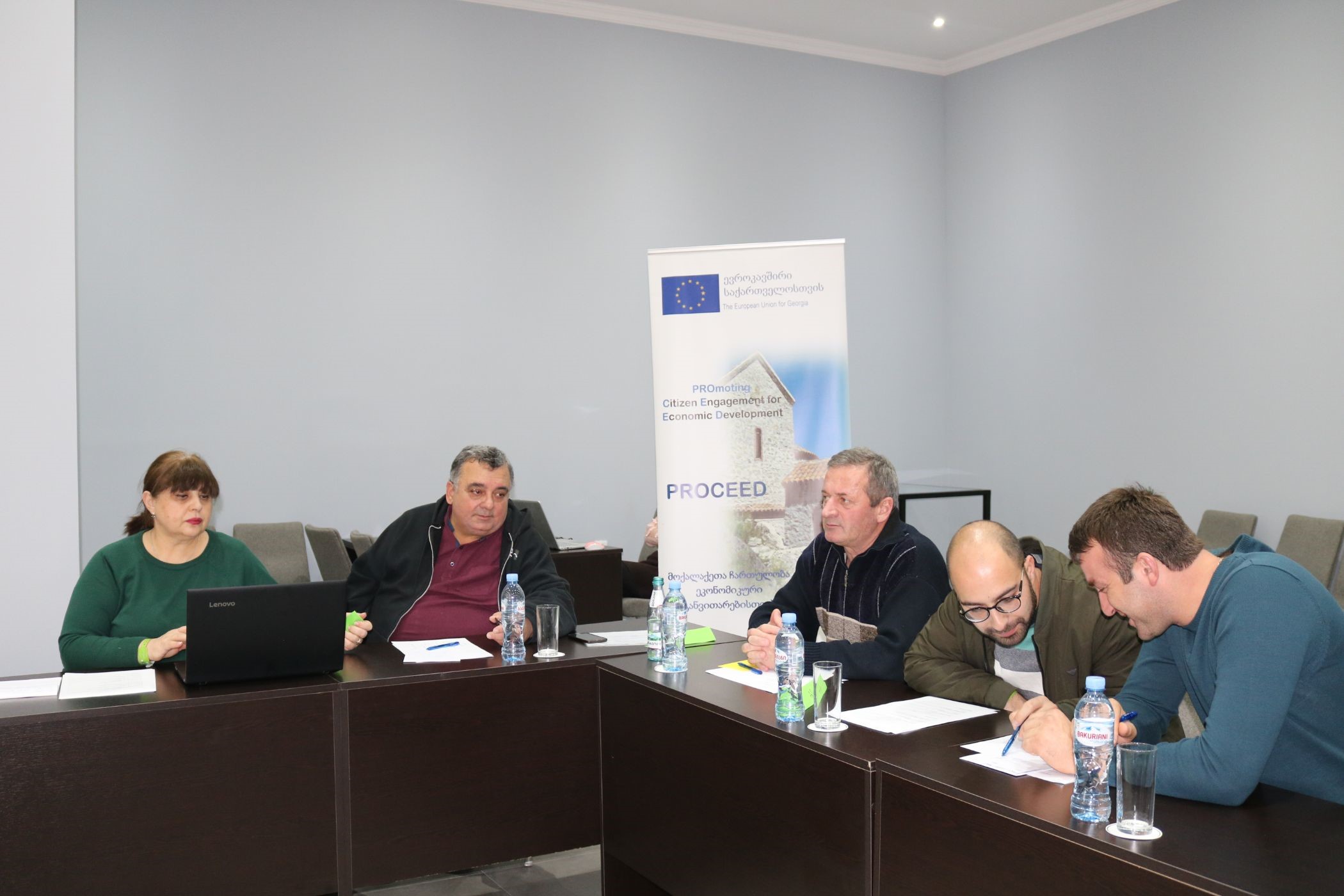
The LAG supports both private sector/business development and the improvement of social services. It has assisted to expand local hotel networks, training and information centers, and sports and health facilities. During the Covid-19 pandemic, the LAG’s support for the community increased even more. The local population received funding to buy necessary equipment for construction and agricultural activities, re-equip their wine cellars, laboratories, small enterprises for alcohol and fruit processing, and different workshops.
“For example, Nasrashvili Cellar participates in international exhibitions and already has export offers. Ketevan Chalakheshashvili's cheese enterprise already offers its cheese in the Fresco supermarket chain…
Gradually, step by step, products of LAG's beneficiaries started appearing at the local market, including dried fruit from "Charozi", nuts, dairy, and decorative flowers to silver jewelry, and bed linen. We hope in future these enterprises become stronger and develop in other directions as well,’ says Anna.
Akhalkalaki LAG
Like many other municipalities in Georgia, Akhalkalaki’s major problems are unemployment or lack of jobs, urbanization, and the outflow of young people. However, there are also challenges you would rarely encounter in other municipalities.
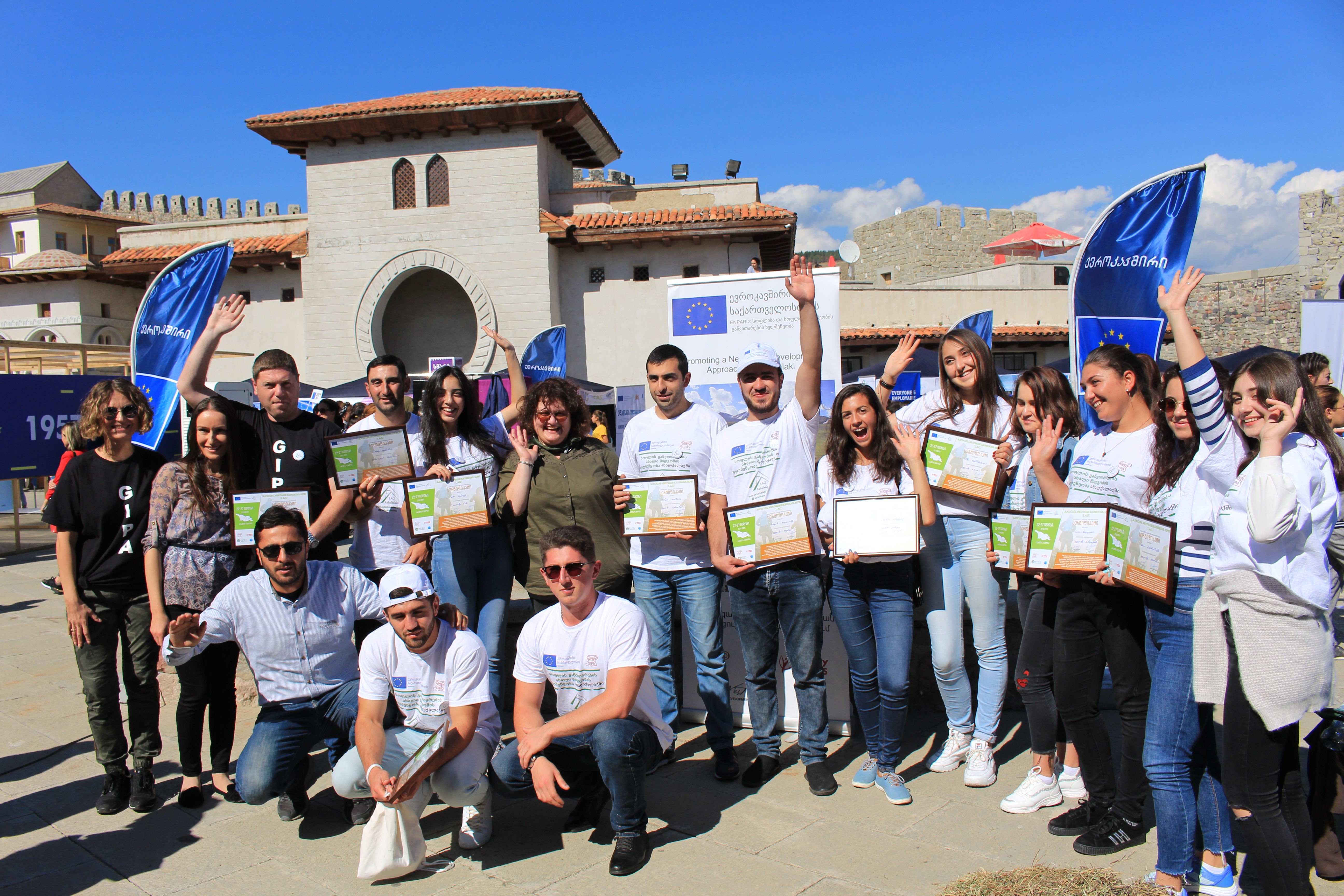
The majority of the population there are ethnic Armenians (93.8%), 5.7% are ethnic Georgians, and 0.5% belong to other ethnic groups: Russians, Greeks, etc. These groups struggle with the Georgian language, which plays a role in the difficulty of their social integration and education. Therefore, Georgian classes are necessary to promote the social integration of the ethnic minorities, and the Akhalkalaki LAG is actively involved in the language initiative. For over a year the LAG's Resource Center has been offering free Georgian and English language classes as well as training in record-keeping and financial accounting, painting, and others.
To date, the Akhalkalaki LAG has supported over 40 local initiatives. In the wake of the pandemic, the LAG Resource Center launched online training courses of the Georgian language for the local ethnic Armenians, starting on Georgian Language Day, April 14.
“If you do not speak your state language, you find it difficult to adapt. The LAG helps young people address this problem, thus facilitating their life and communication in the country,” says Teresa Chivchiani, a member of the Akhalkalaki LAG and Director of the Resource Center.
***
With EU's support, Local Action Groups have already been established in 12 Georgian municipalities, including Lagodekhi, Borjomi, Kazbegi, Tetritskaro, Akhalkalaki, Dedoplistskaro, Keda, Khulo, Tsalka, Akhmeta, Tskaltubo, and Mestia. To date, the EU-supported LAGs have funded over 500 rural development initiatives in the fields of agriculture, tourism, social and rural infrastructure development, and environment, providing new employment and income-generating opportunities to more than 1,000 rural households and improving the livelihoods of over 10,000 rural residents. Yet, local development groups go far beyond numbers - they bring together the vision, energy, and commitment of rural people.![]()
Image source: EU for Georgia, www.eu4georgia.ge
